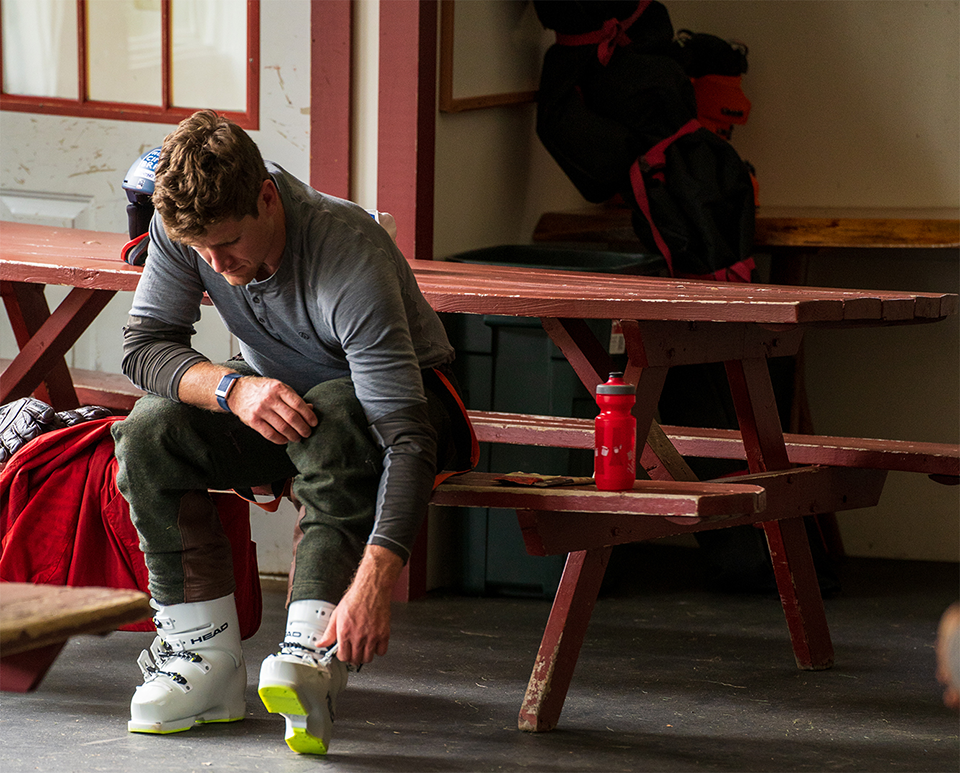A chilled air brushes by as I sit on my portable stool getting ready for the first runs of the day. Three pairs of GS skis lie beside me, deliberately placed in order by run number that my serviceman Heinz has laid out in anticipation. Heavy squalls have been drifting in and out through the early morning, accumulating a thin layer of snow over the sprawled-out equipment, but not quite strong enough to disrupt our day of training. I reach into an oversized backpack to pull out a well-travelled white thermos full of steaming UnTapped Lemon Tea Mapleaid. After a couple of sips to help warm up and energize for the coming session, I place my bottle back down, click into the first pair of skis, and skate over to the fixed-quad chairlift where Heinz has been patiently waiting. It’s only August 4th, but the race season is imminently upon us so every run counts.



With a BMI over 25 and a personal record long distance run of only 7 miles, I’ll be the first to admit that I’m a bit of an ugly duckling among the UnTapped ambassador crowd. Downhill racing is a far cry from any long-distance endurance sport, yet all of us share common ground when it comes to taking our training seriously. In case you might be asking, “what goes into being a World Cup ski racer?”, I can shed some light as to what it’s like to be me from a physiological perspective.
As an alpine ski racer concentrated on the speed disciplines, I need the right amount of strength, power, and coordination necessary to navigate between 120 and 150 seconds of high-speed downhill. The primary workouts included in my conditioning phase are full body strength and power, plyometrics, mobility, and cardio, with each respective system having equal importance. For building strength and power, I add stress to my body through Olympic lifting, squatting, leg press, and hamstring intensive exercises. Plyos are usually composed of field exercises like jumping, cutting, and sprinting to integrate more natural body movements and full speed explosivity. The intentionality behind mobility is to keep my body parts healthy and functioning as they should while working under strain. Lastly, the cardio workouts are necessary to increase aerobic tolerance and lactate threshold for better muscle endurance. When sitting on a bike trainer, grinding through six sets of three-minute efforts at 300-400W, water mixed with a couple of UnTapped packets helps fuel my body to make it through the session. The Salted Citrus has especially been my fan favorite flavor this past summer.
This physical training program maximizes efficiency and durability over the course of a 12-month cycle that generally resets at the beginning of May each year. When I reach peak training mode between May and July, four days a week I will have double workouts built in. One day will only have a long slow distance activity, and then the other two are off days to prioritize rest and recovery. Working out primarily off snow until August allows me to focus on getting into the best shape for the start of the season, but also gives time to reflect on ways to keep progressing once I’m back on skis. Returning to snow for the first time is always exciting and a refreshing change of pace from the daily gym grind. I always make sure to pack up my UnTapped mixes and say goodbye to Vermont but know there will always be a part of home wherever I go.


